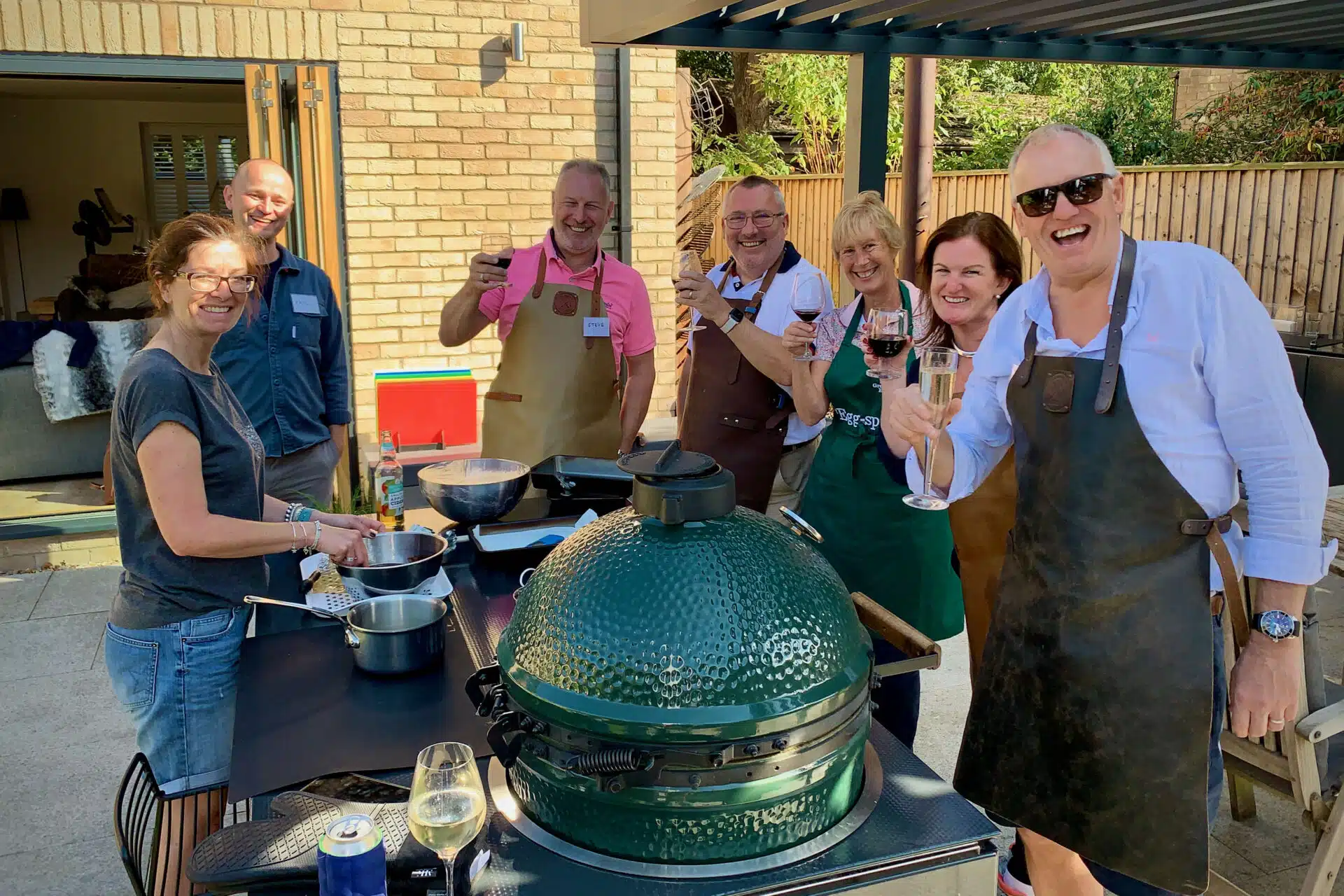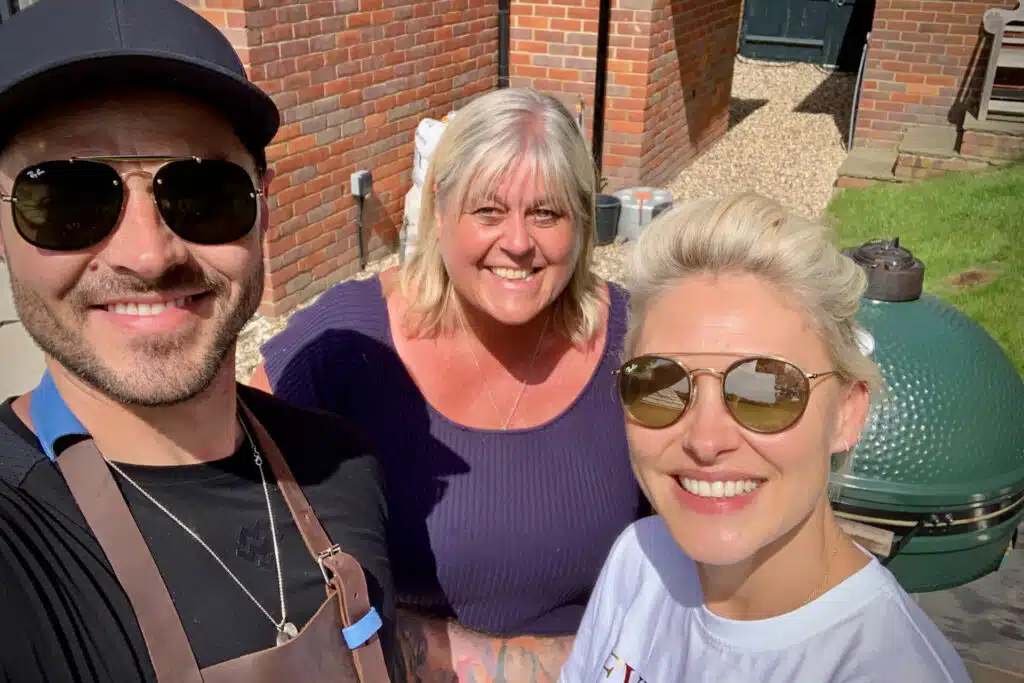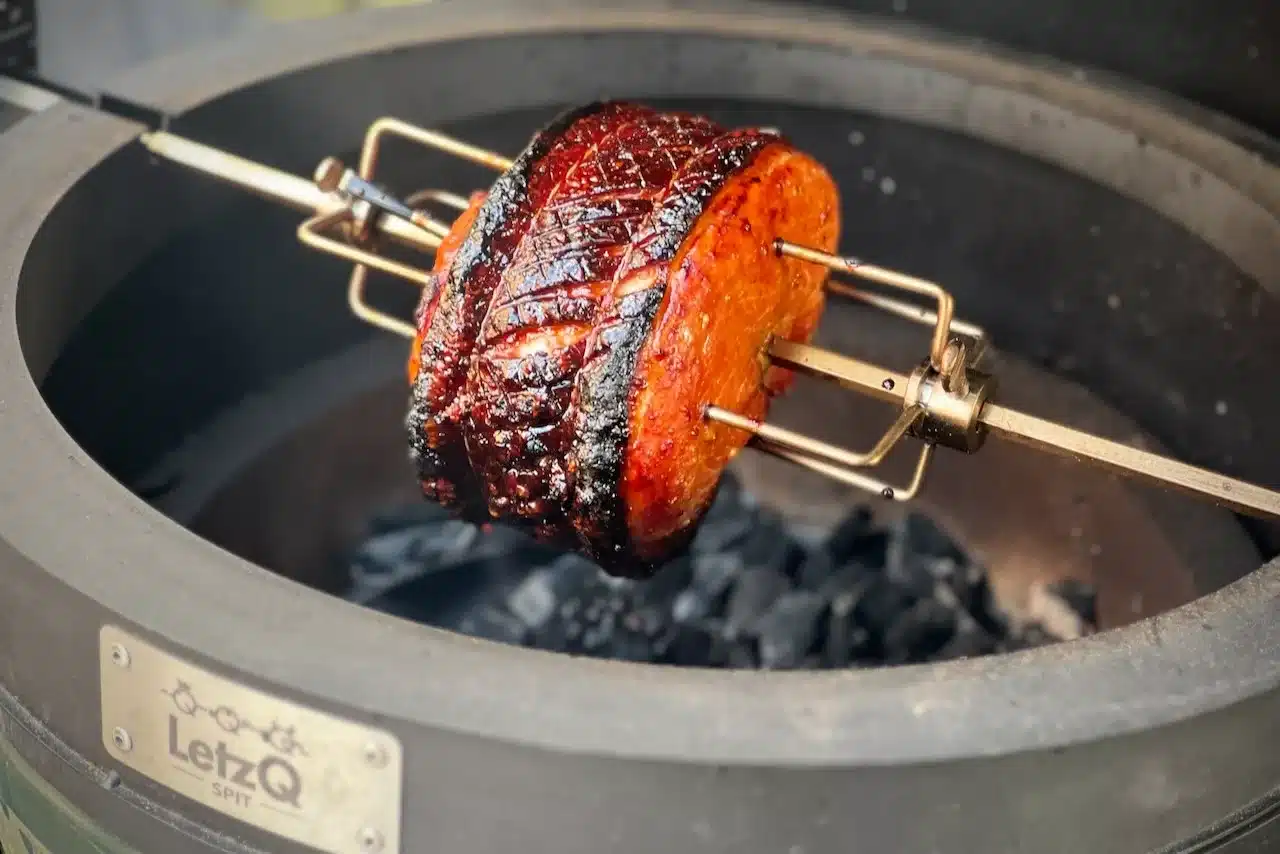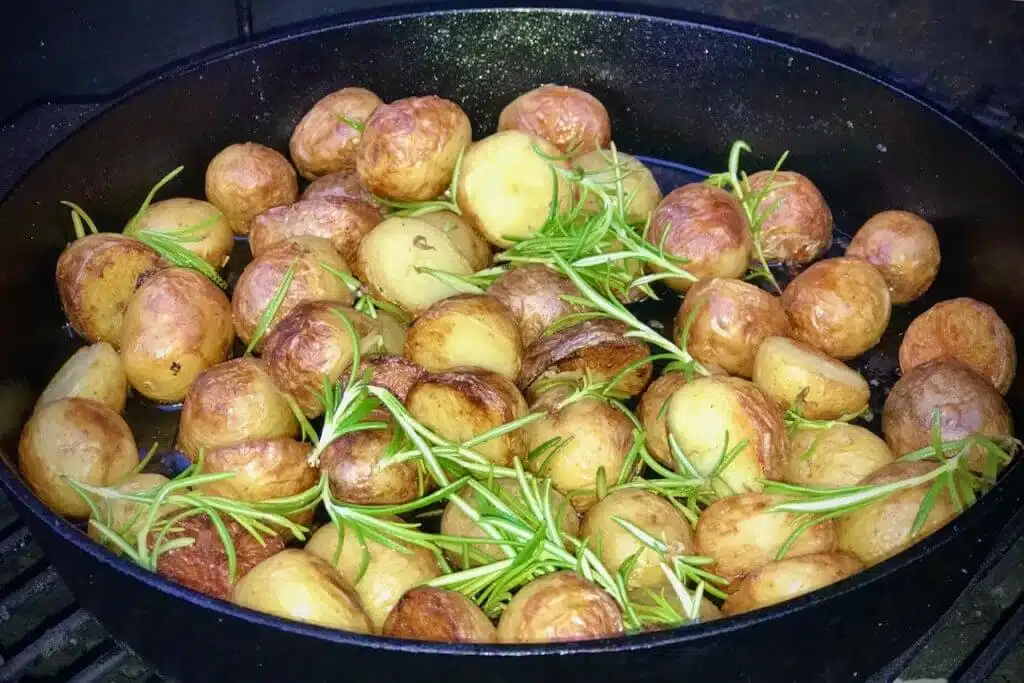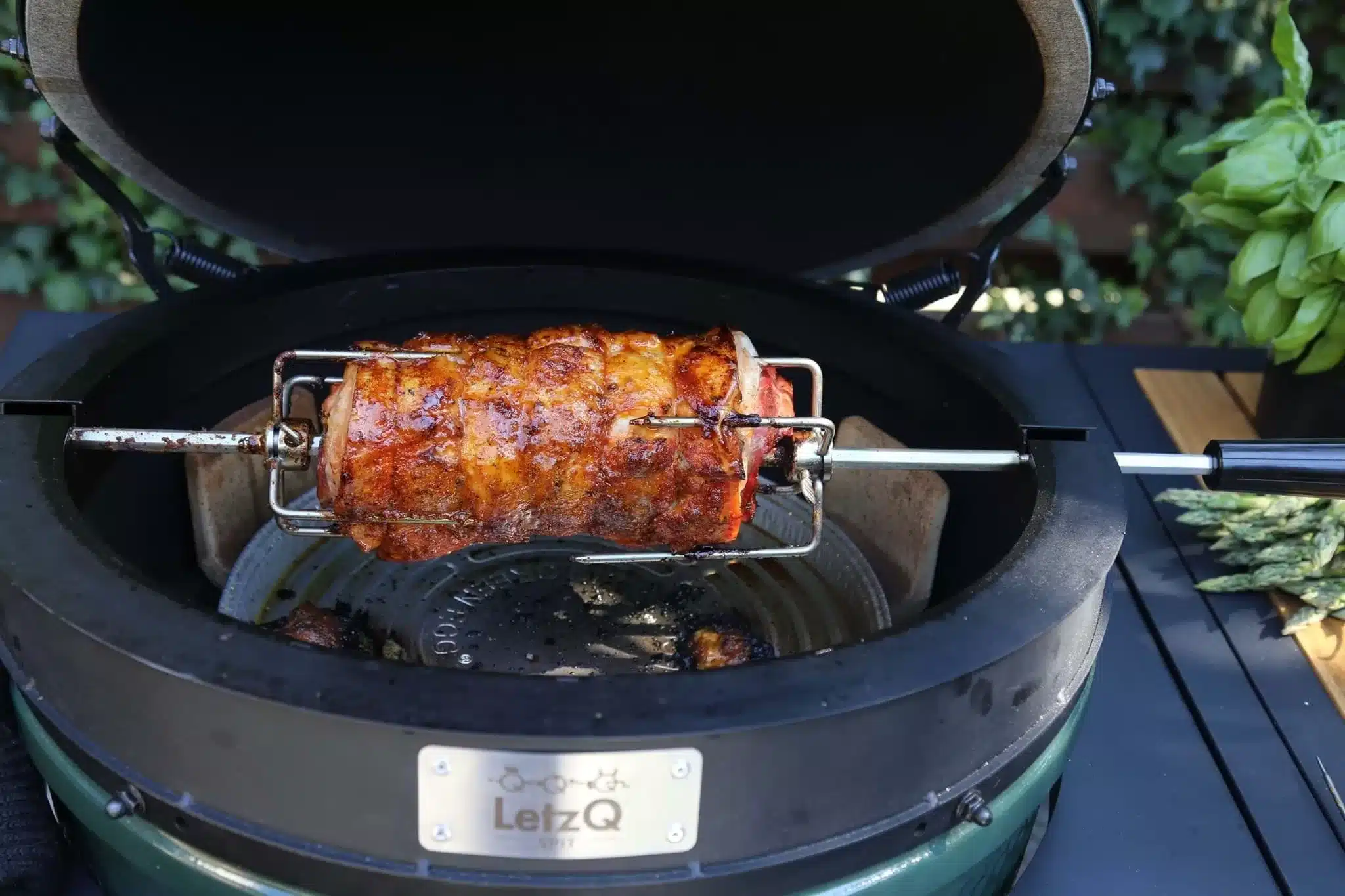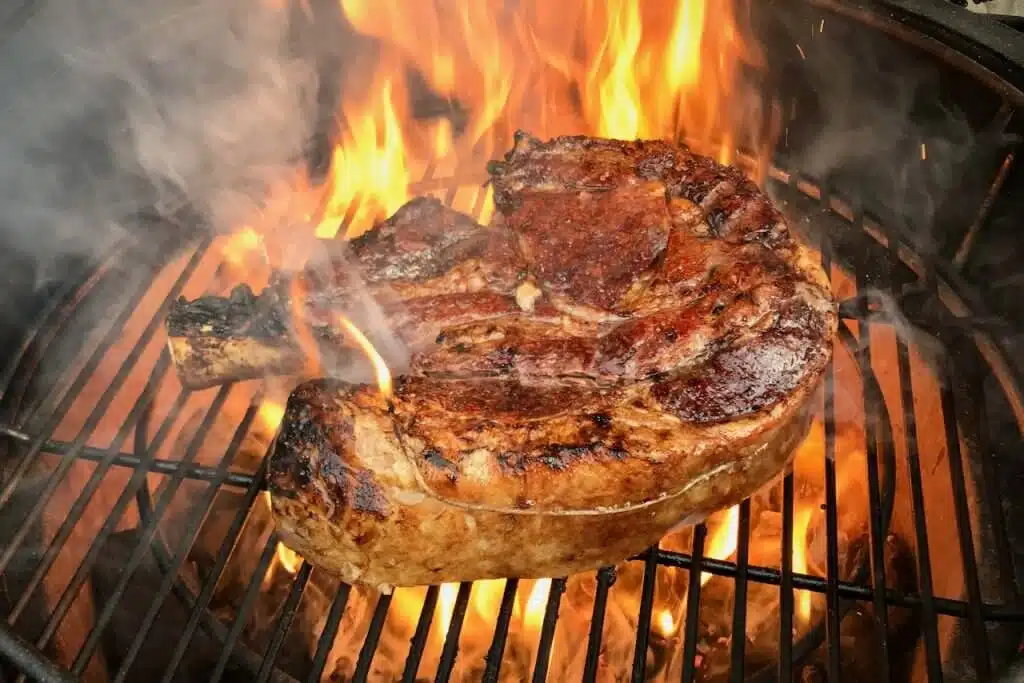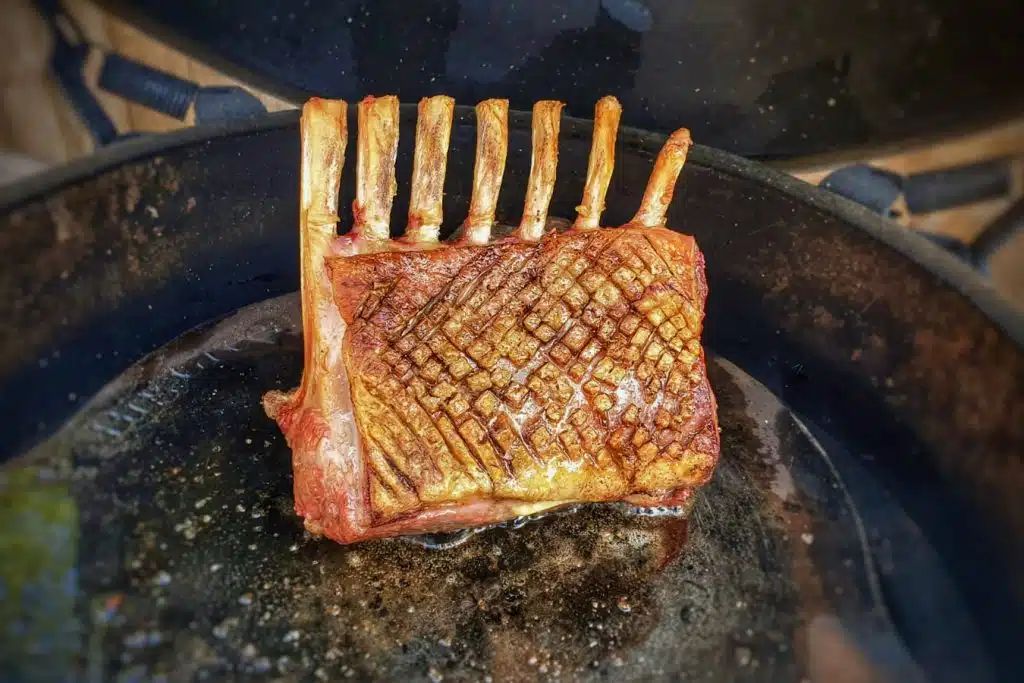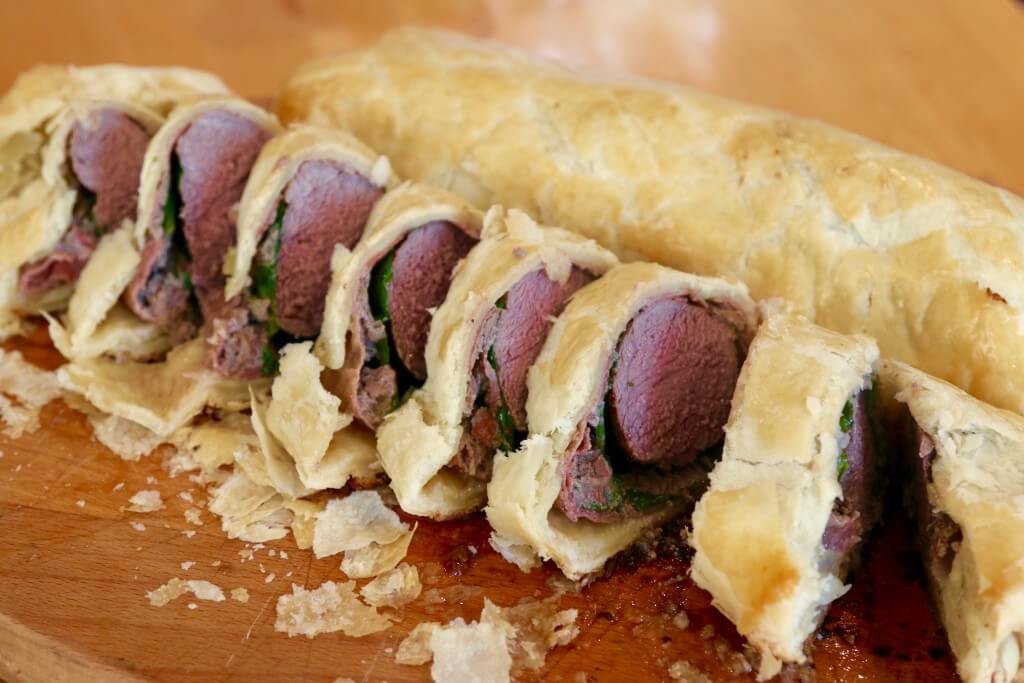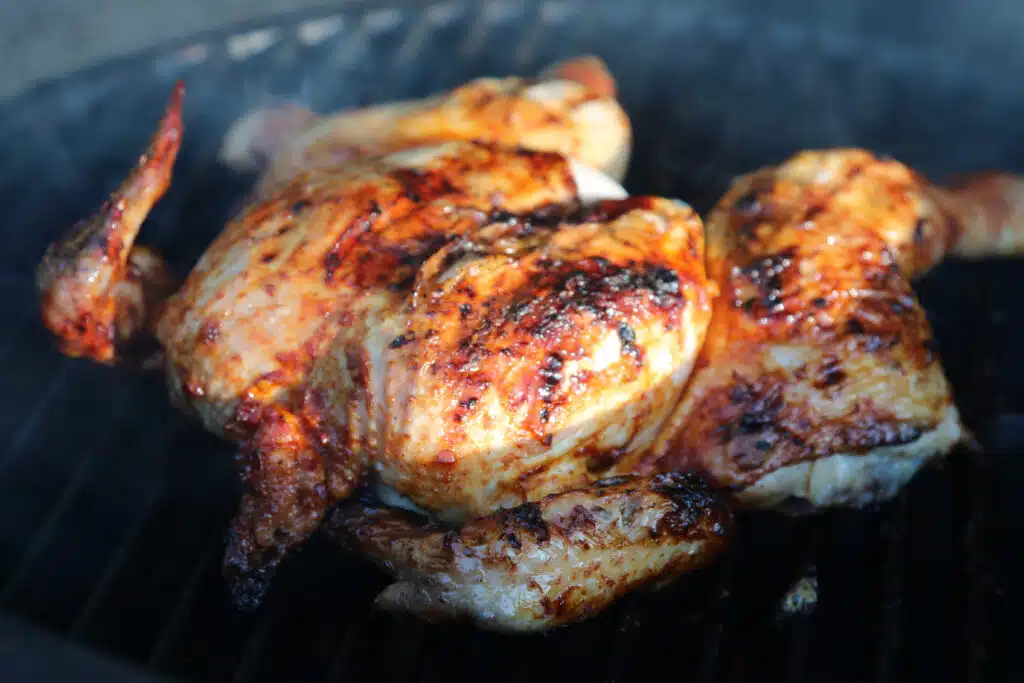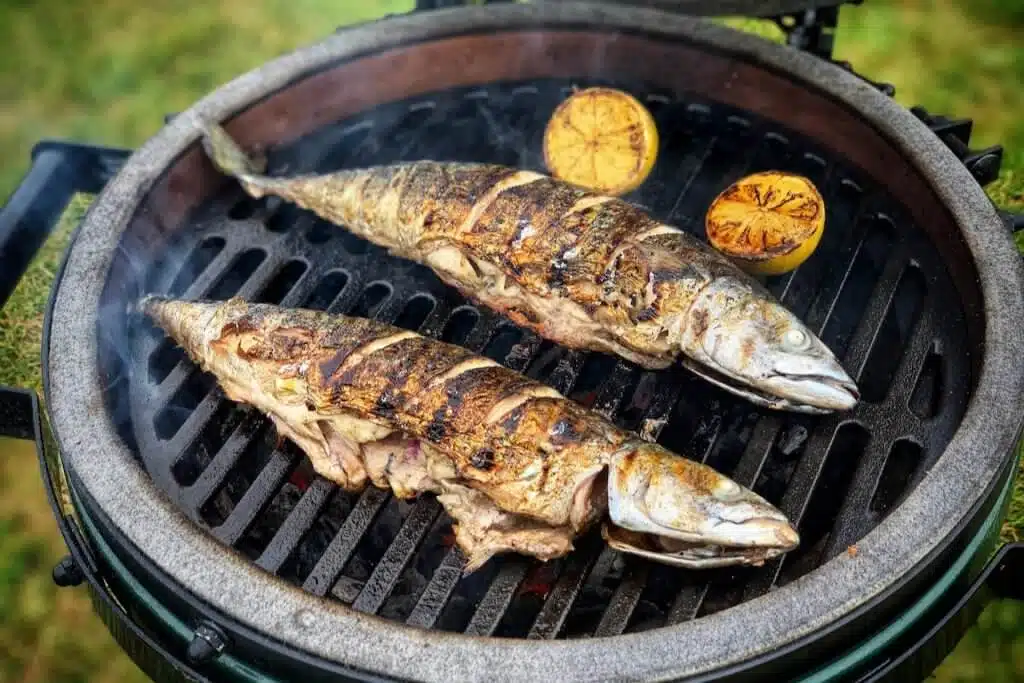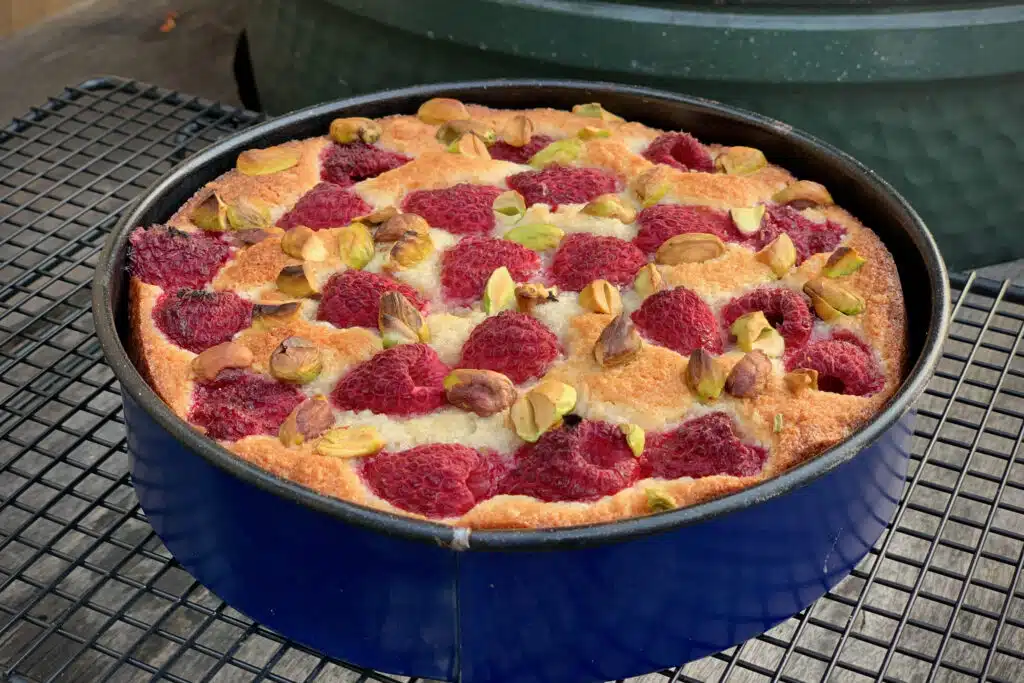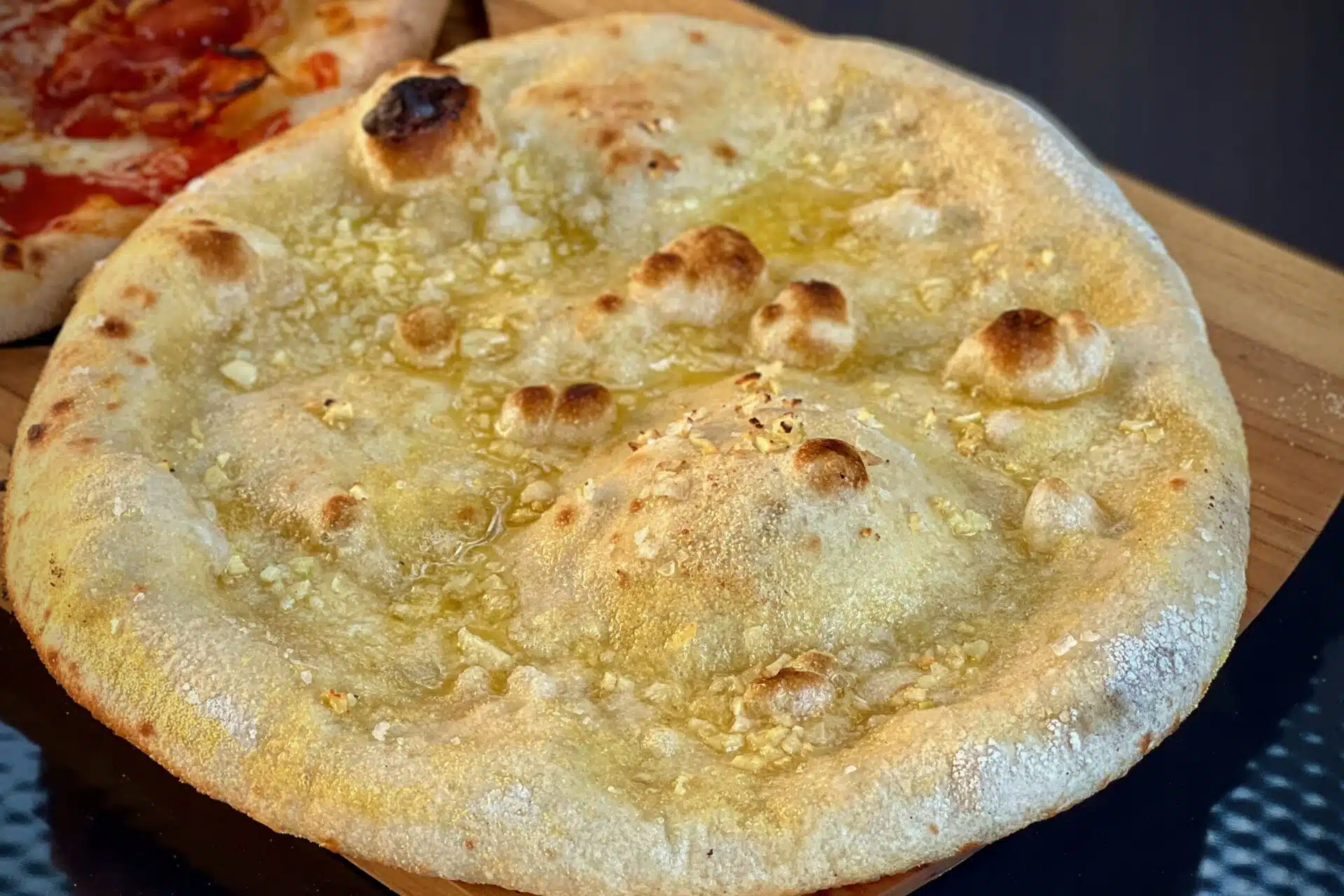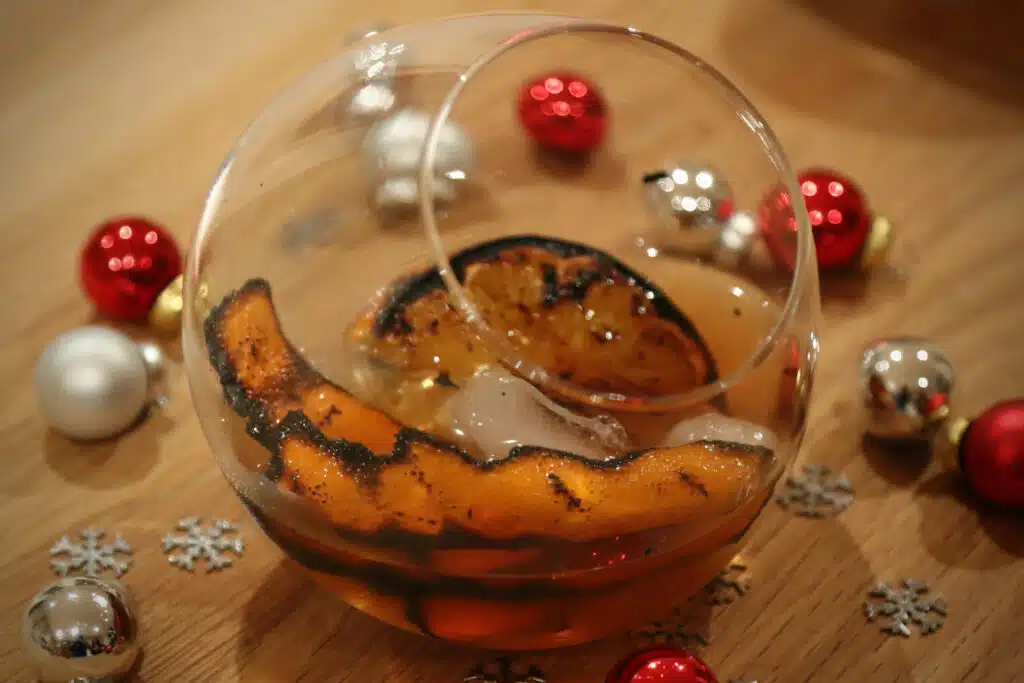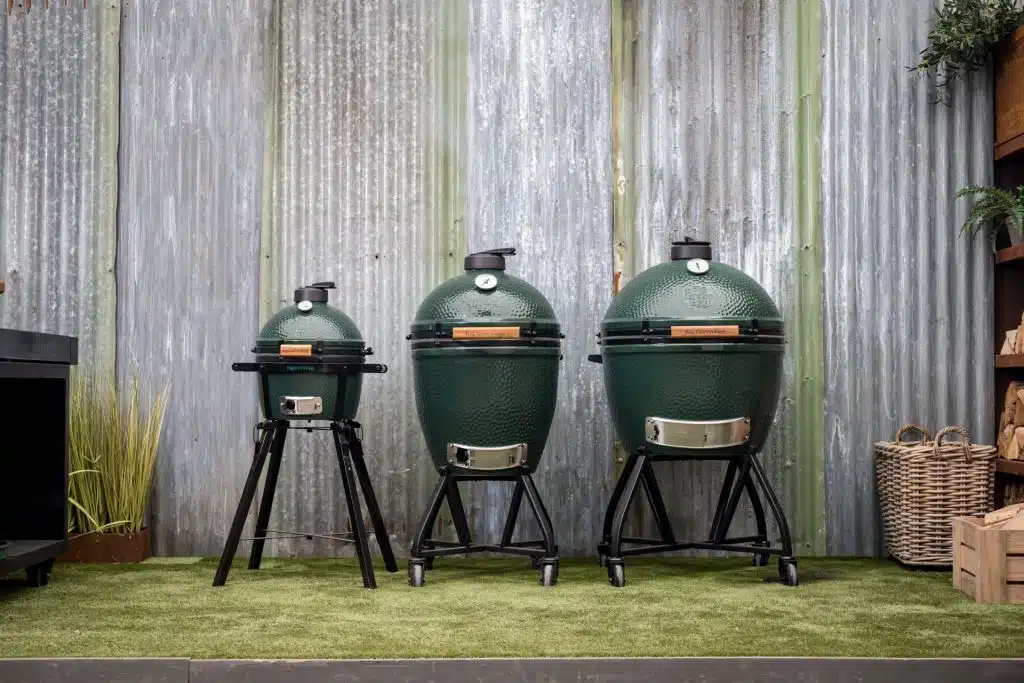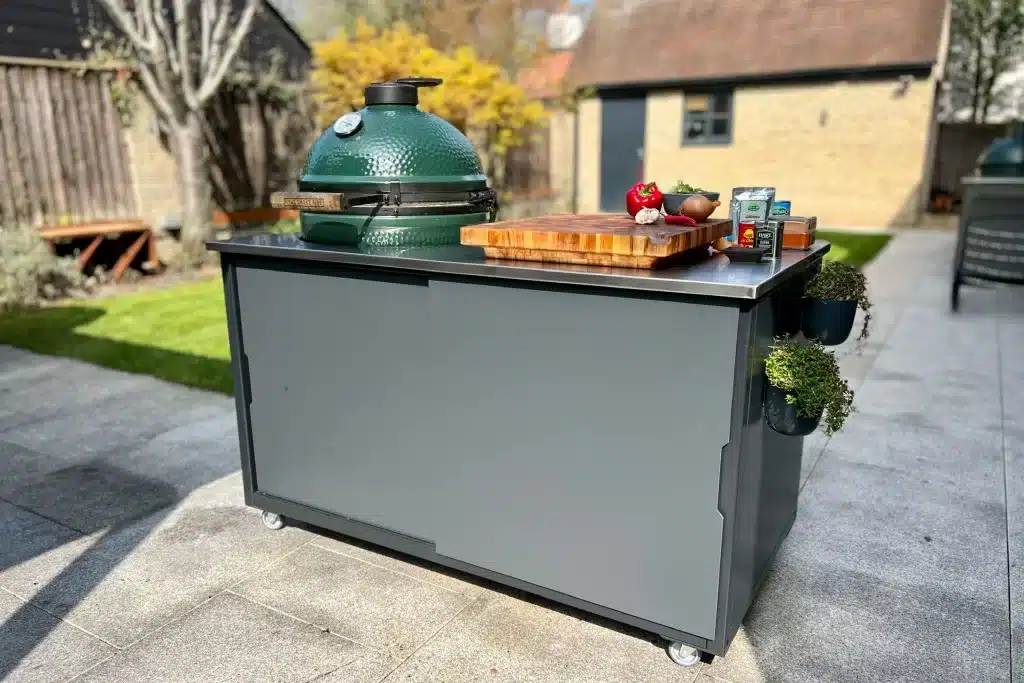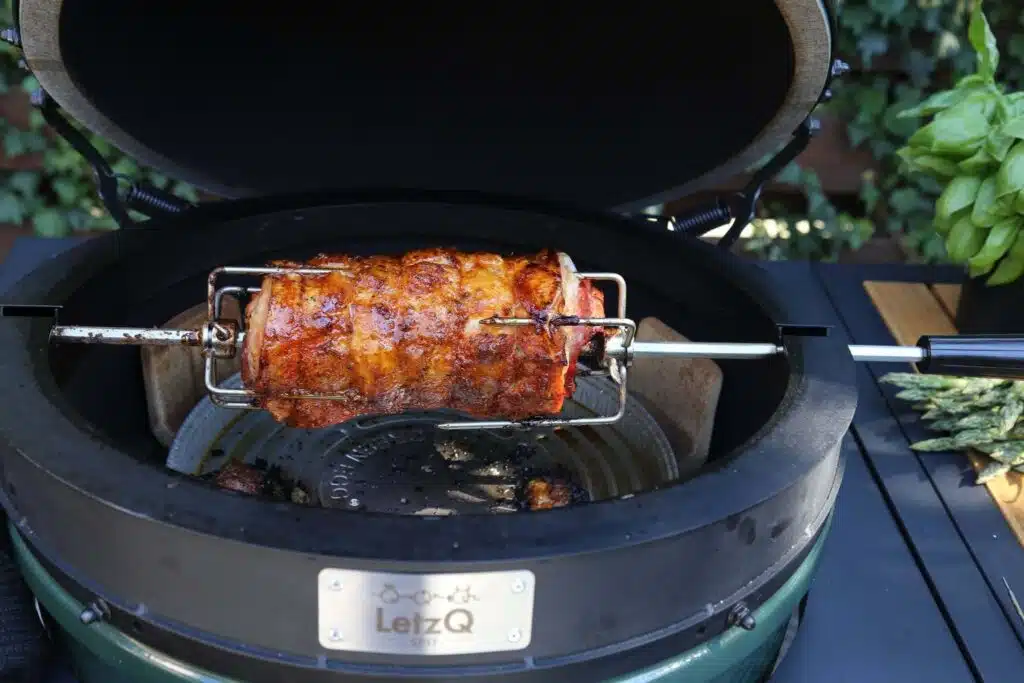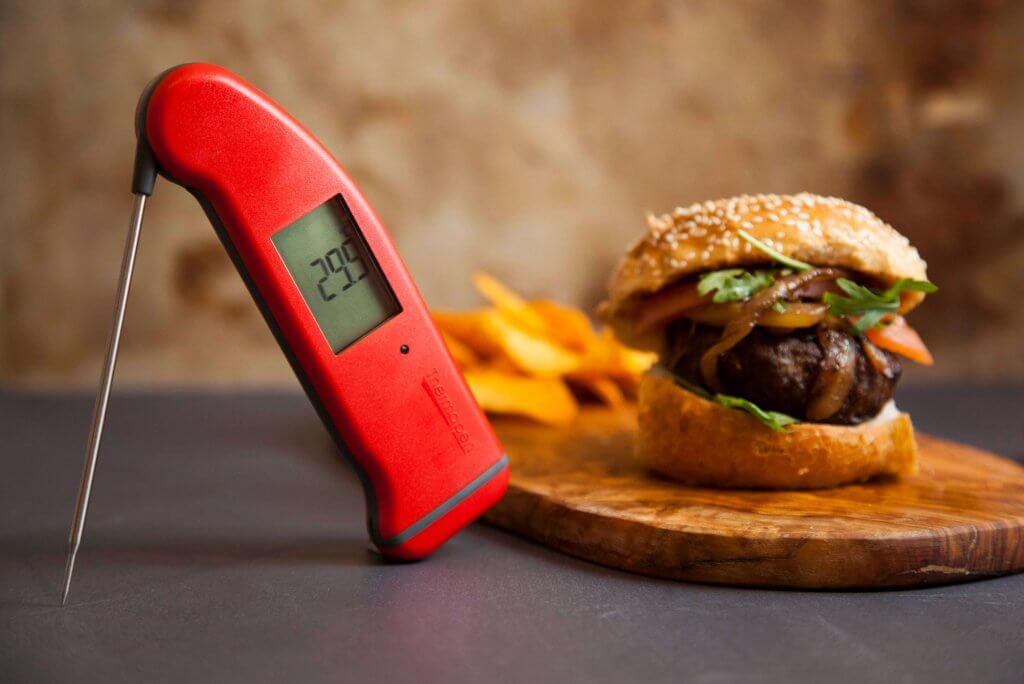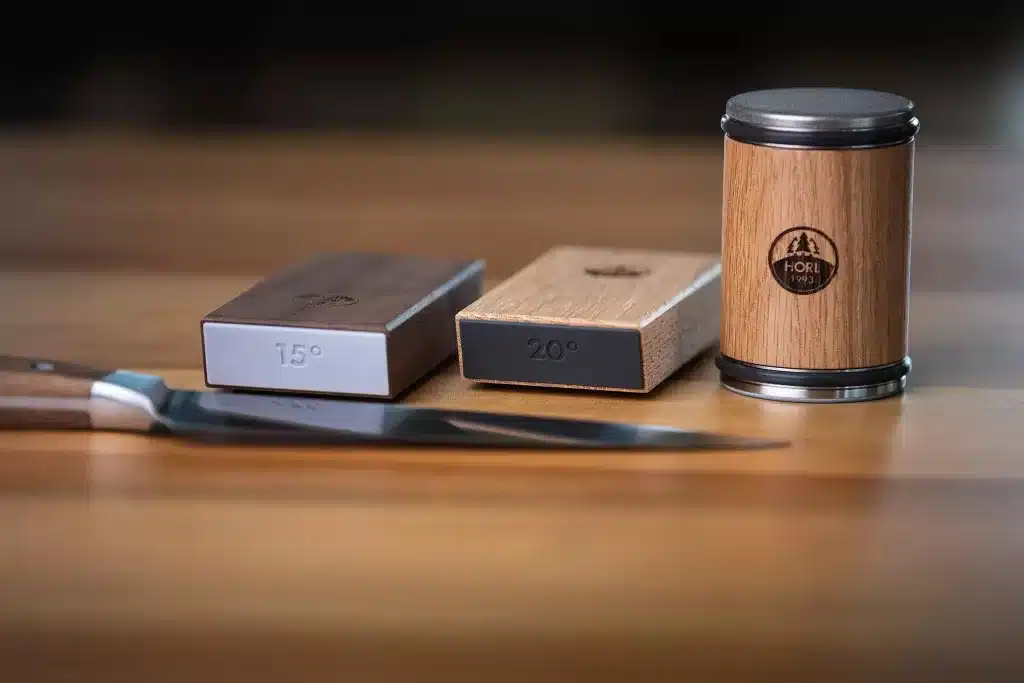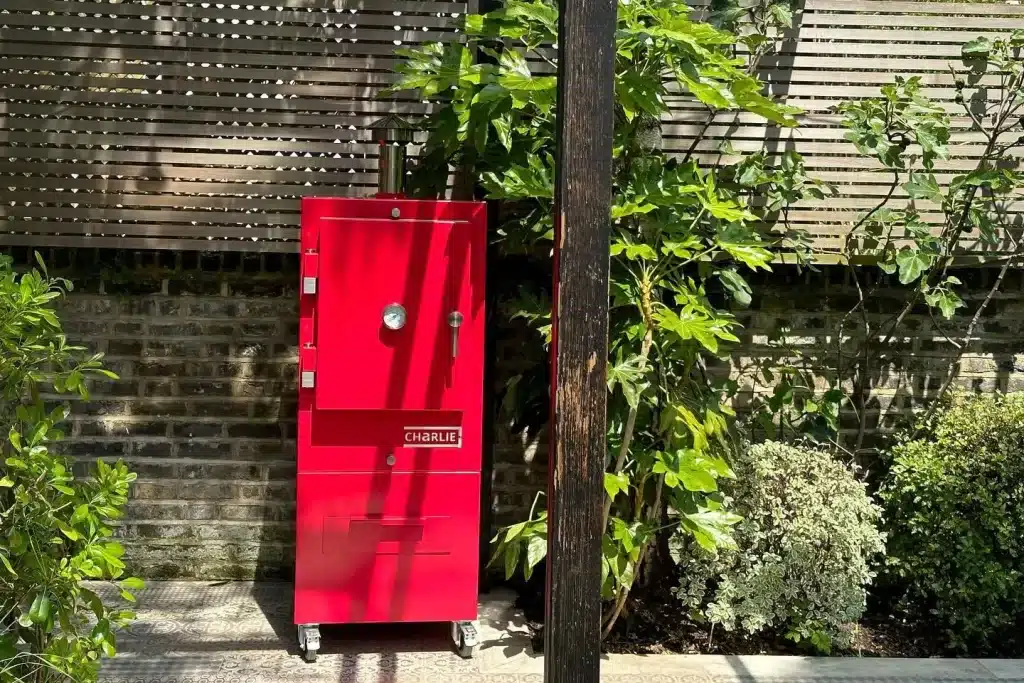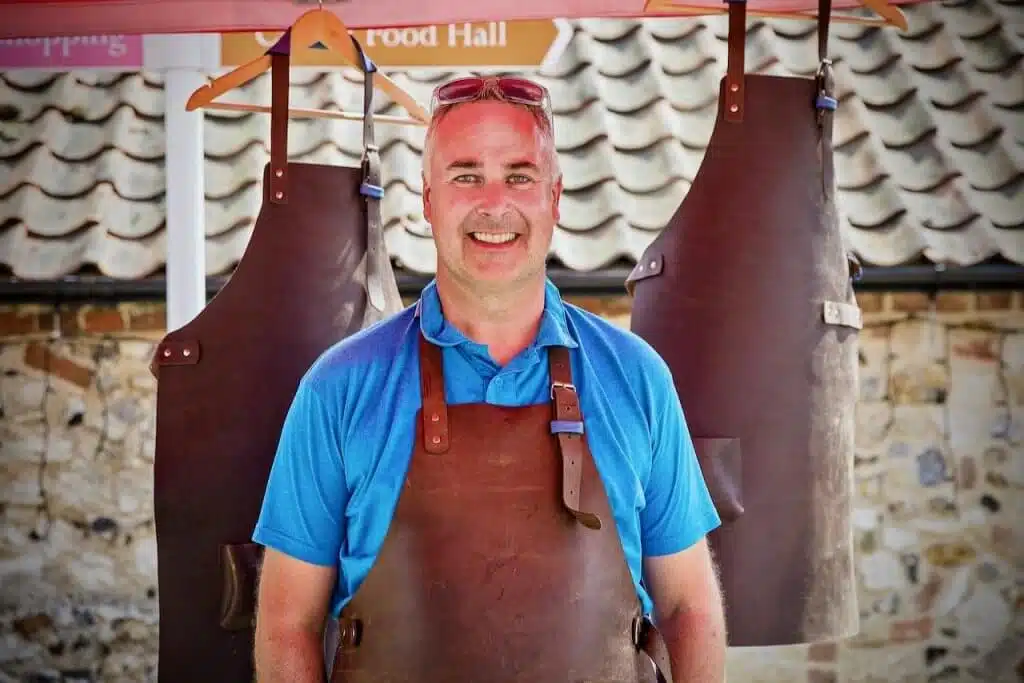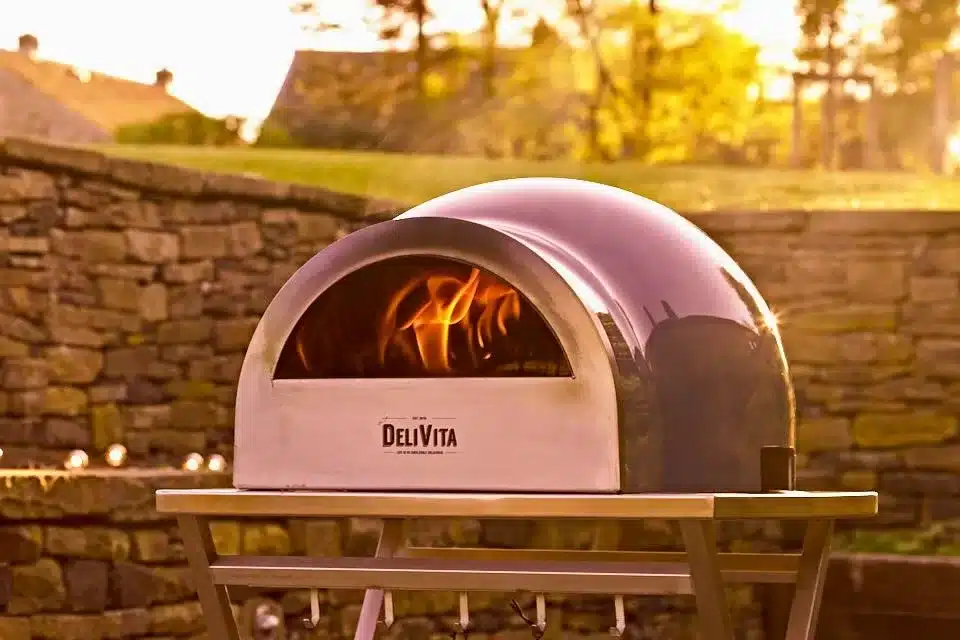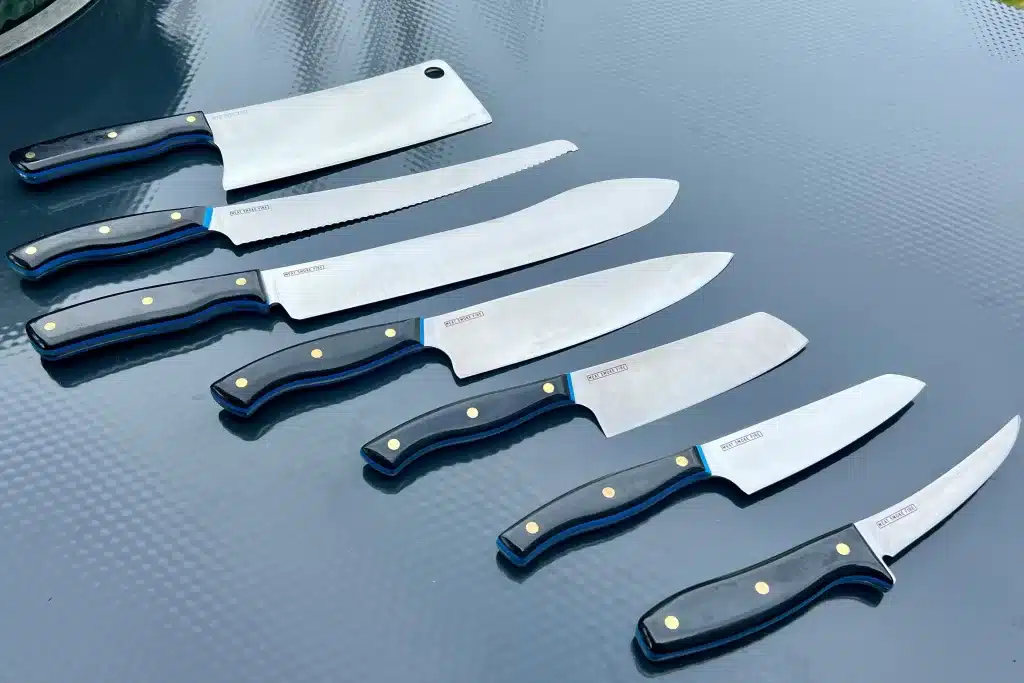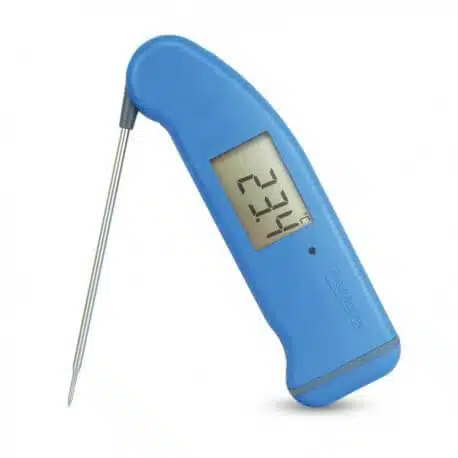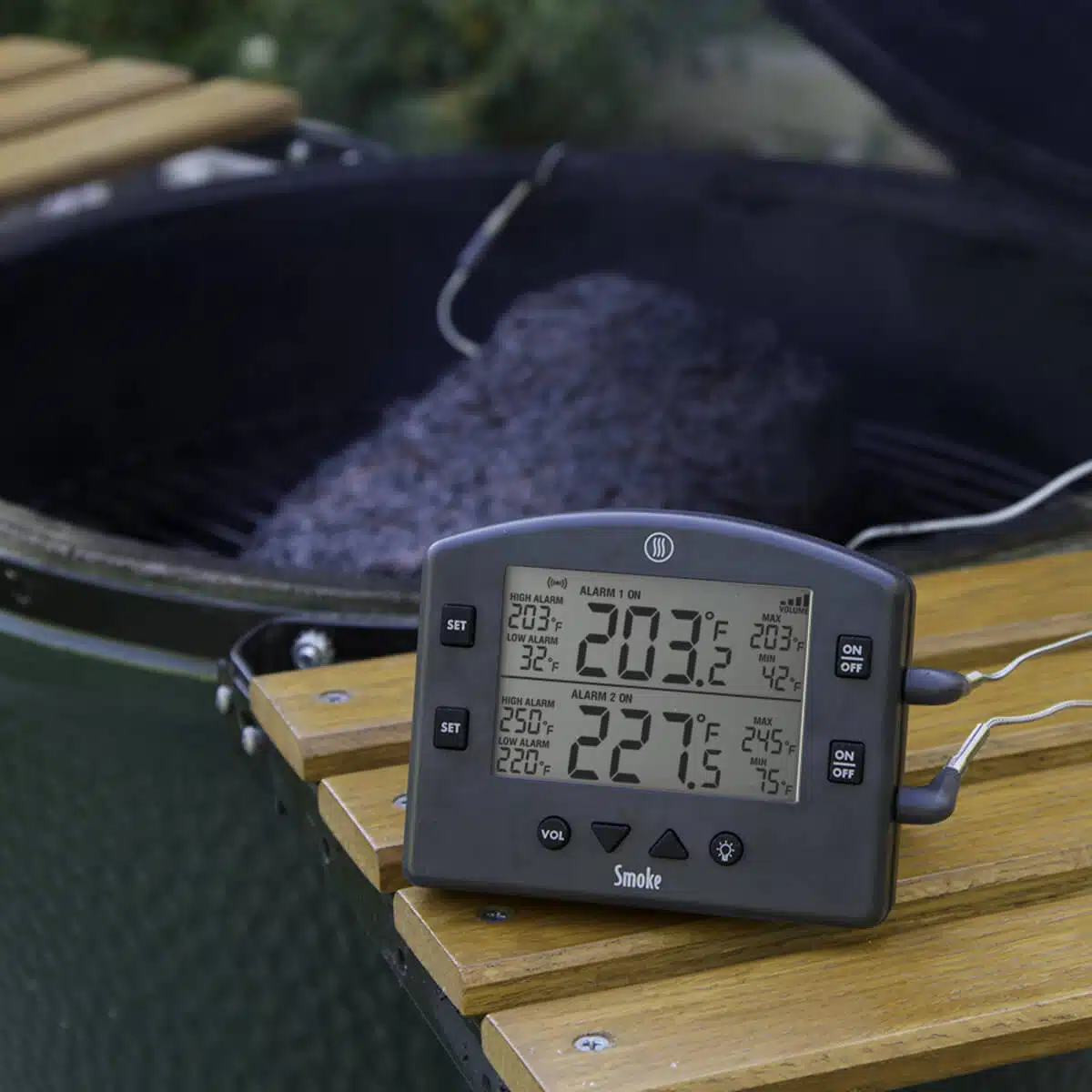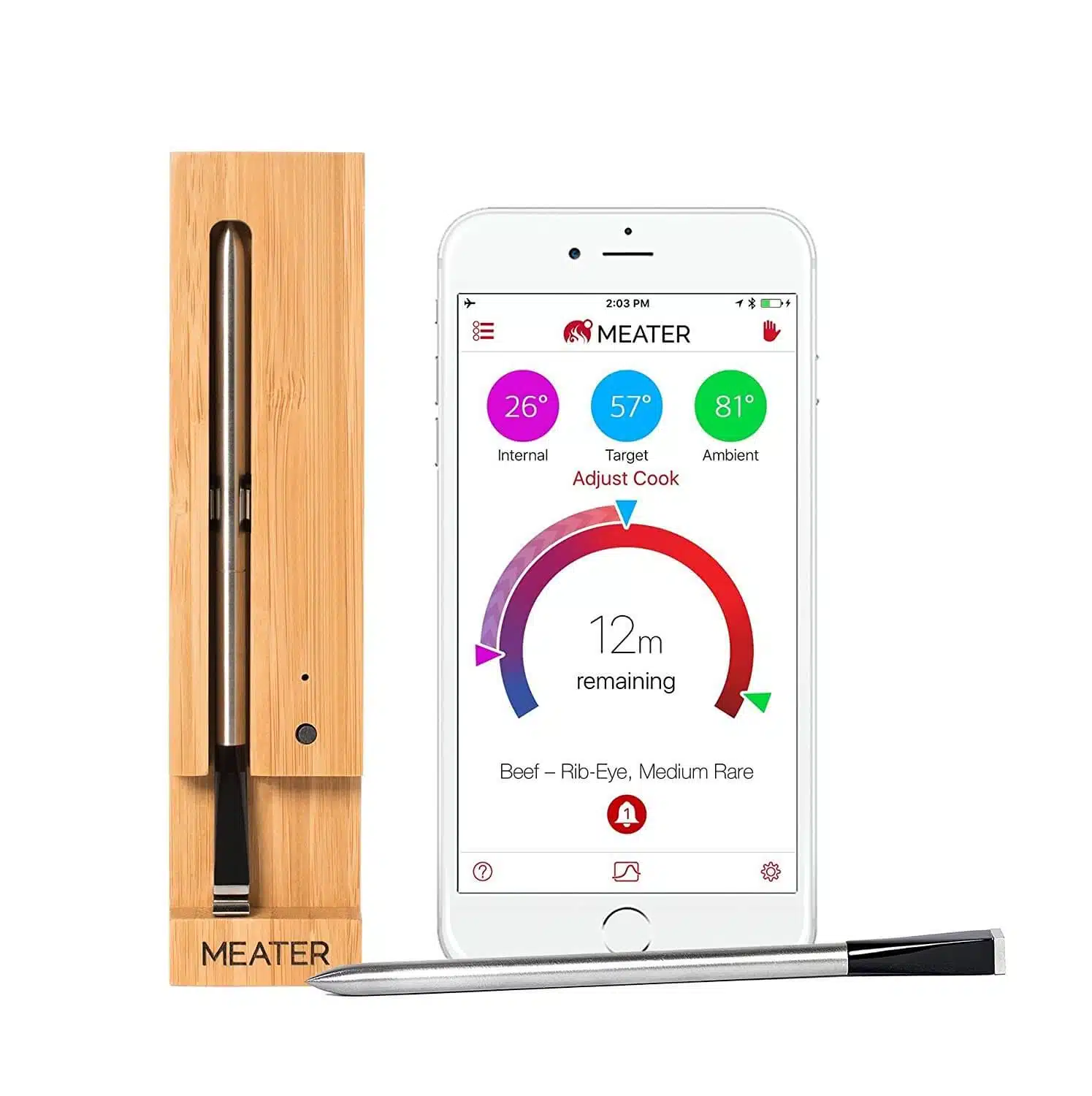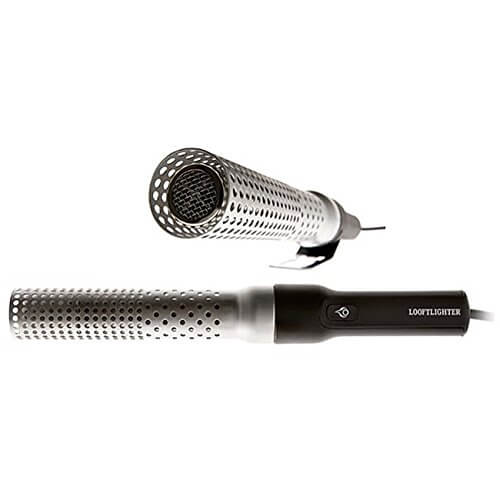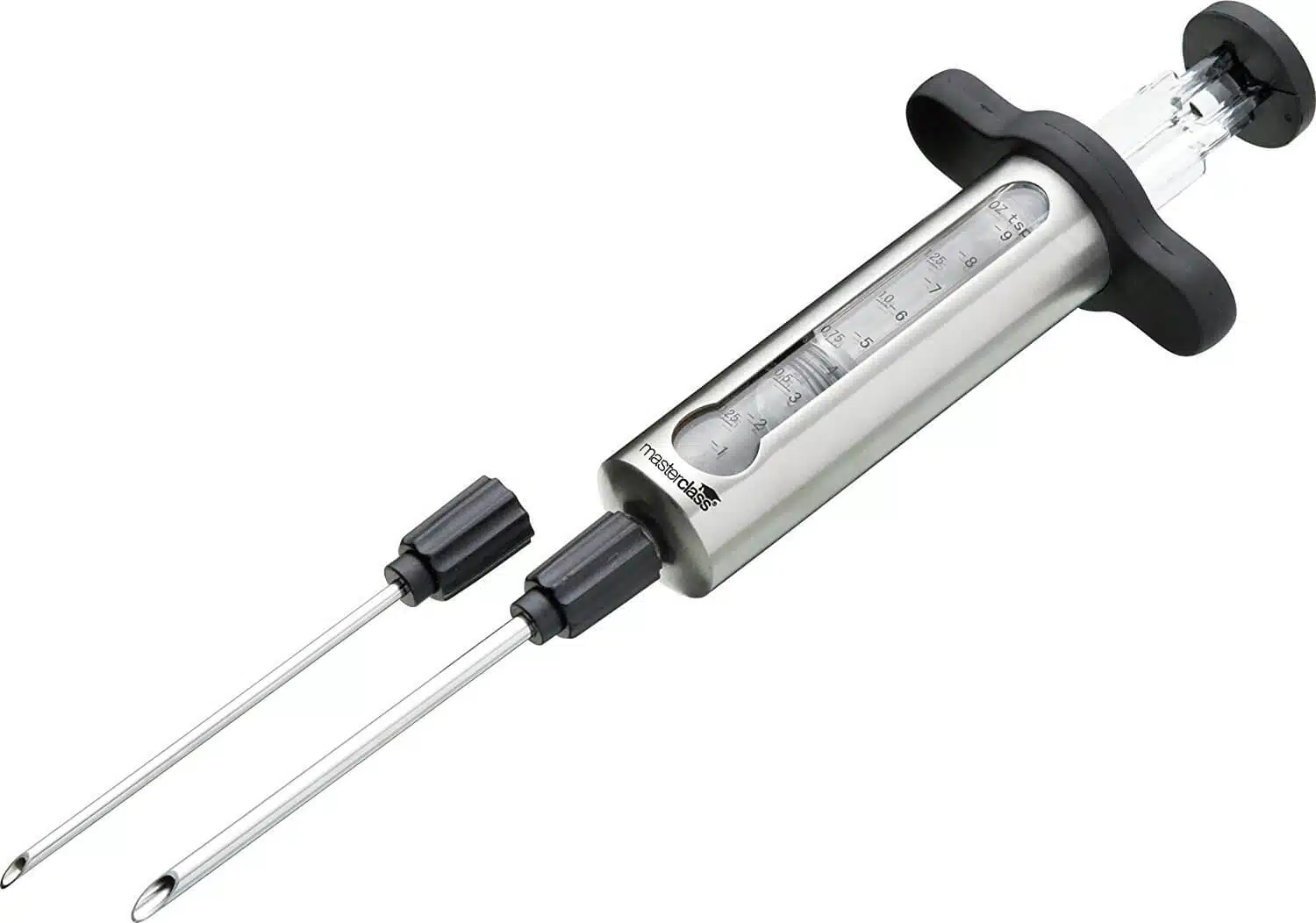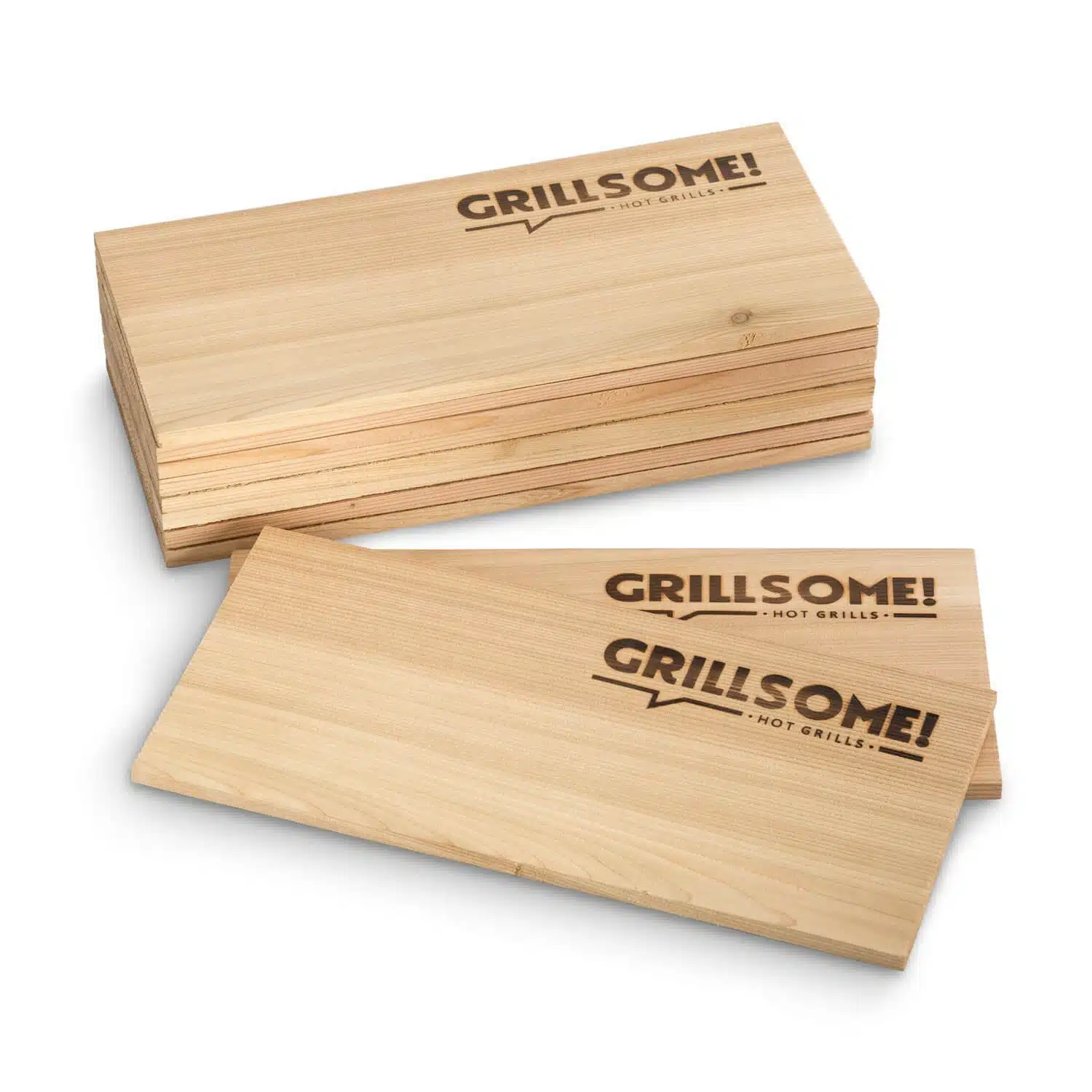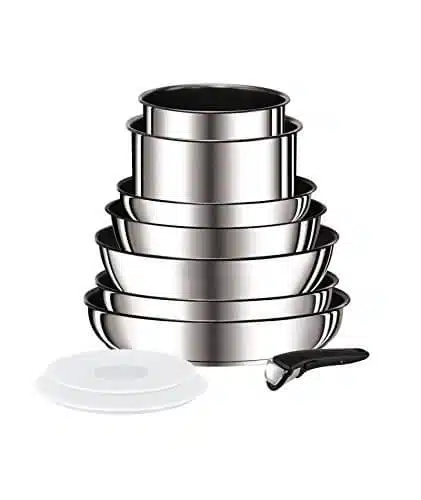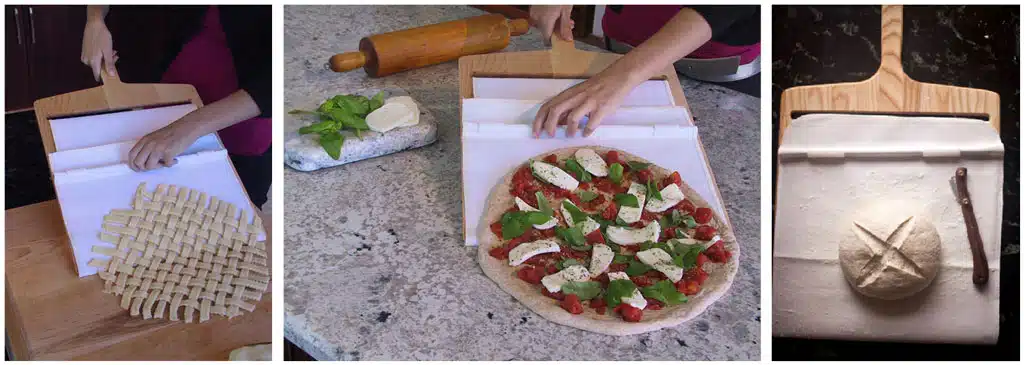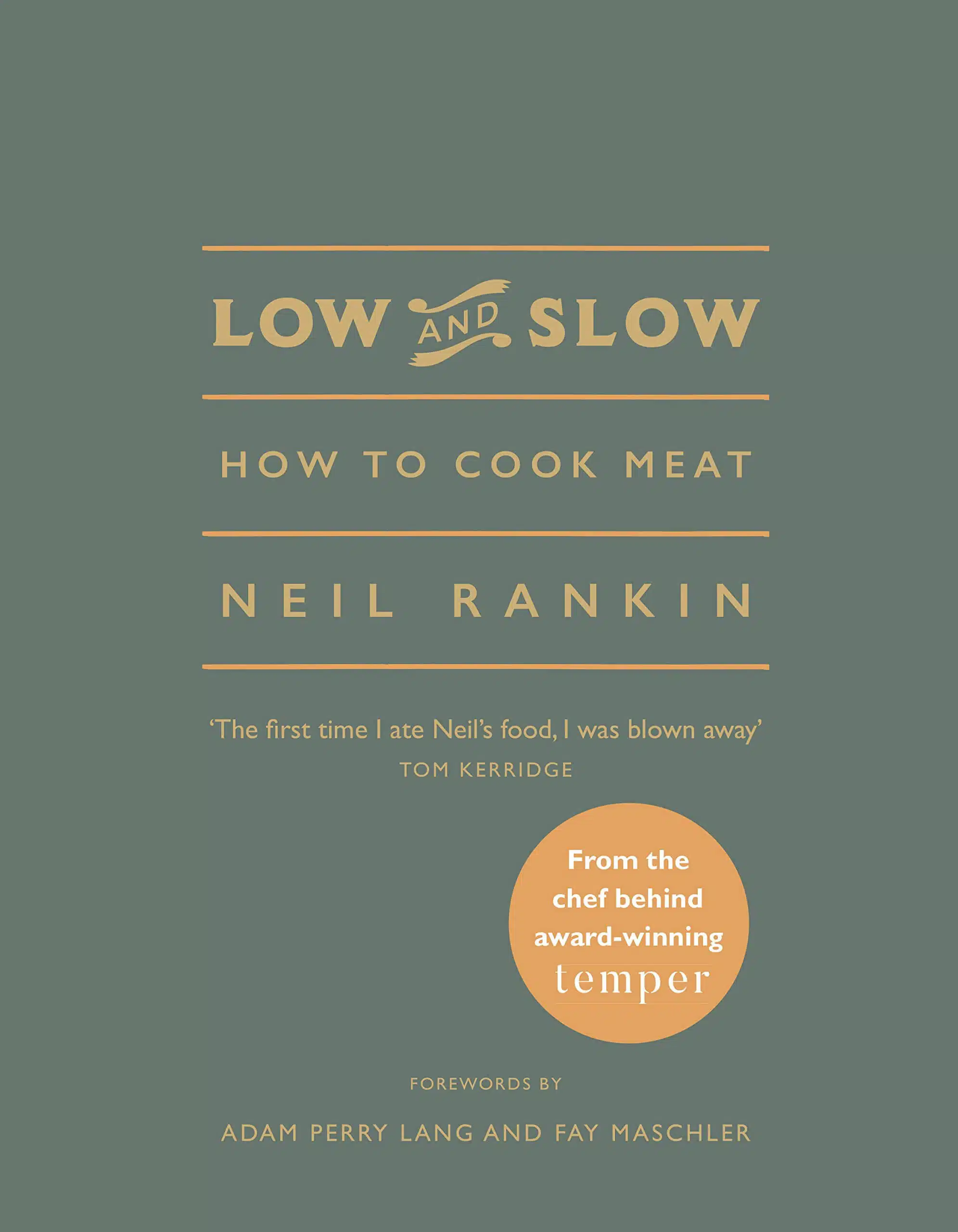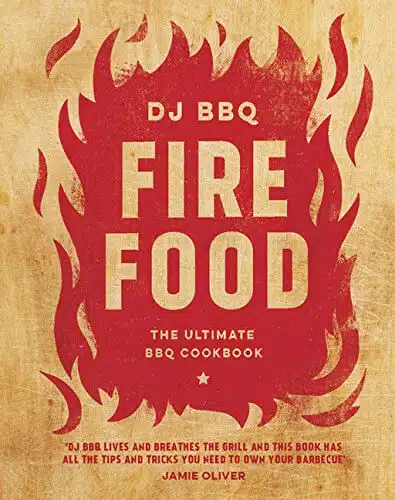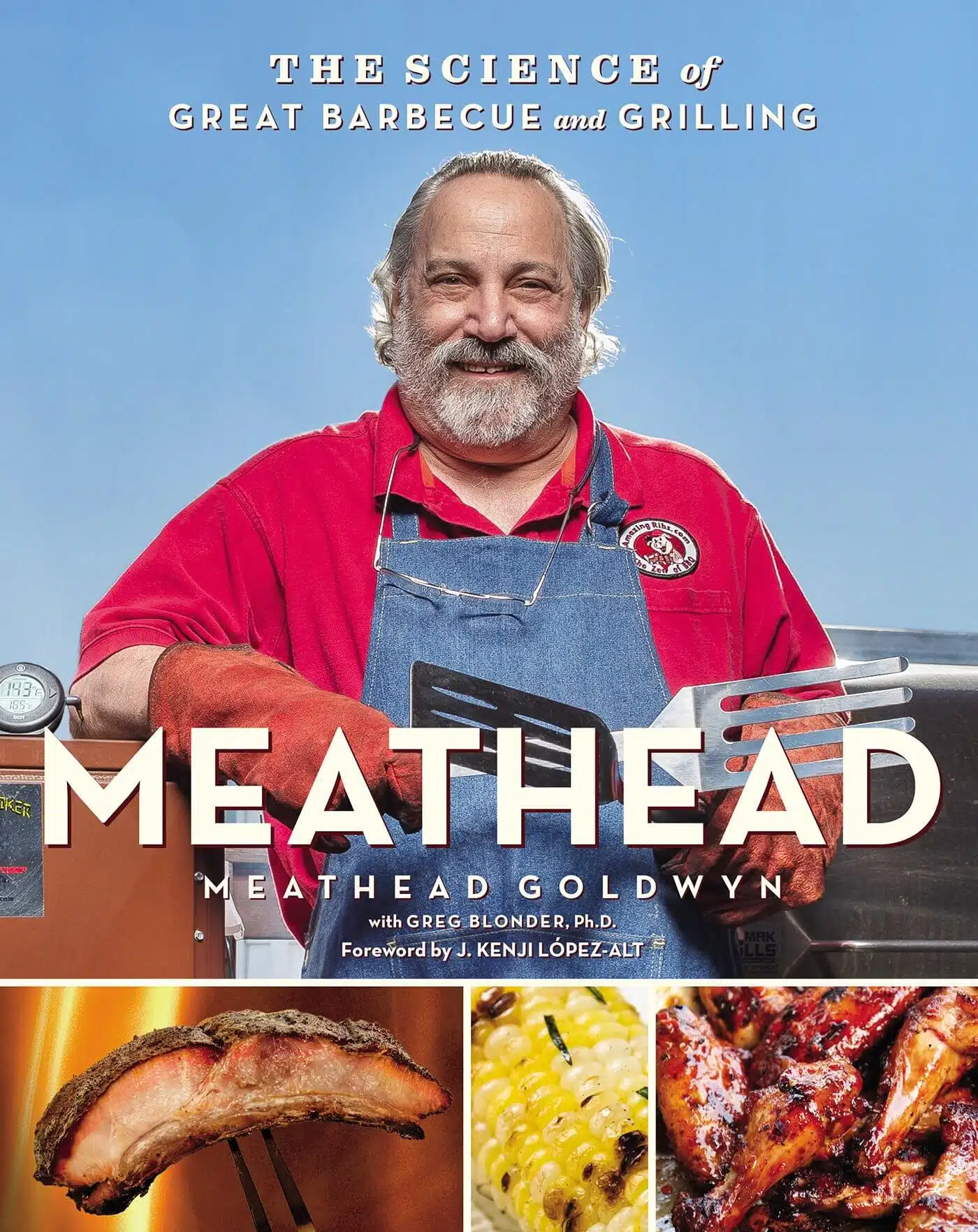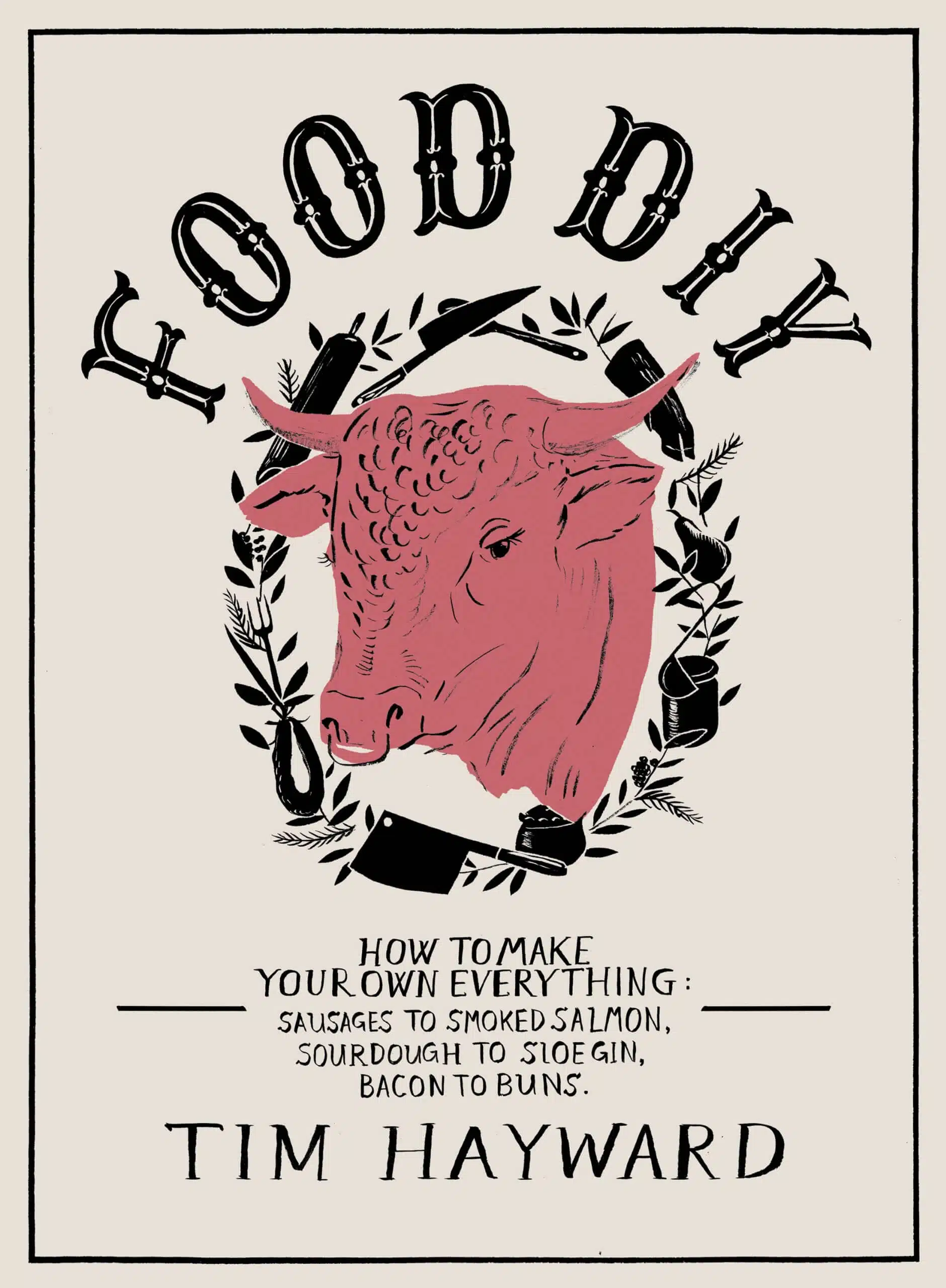



Dirty Steak vs. Seared steak
The recipe is here for the dirty steak.
We fired up the MiniMax as well as your large in order to cook steak traditionally on the large, using a cast iron grid, and dirty directly on the coals of the MiniMax. Cooking the steak dirty adds a really meaty flavour to the steak, especially when it has a big eye of fat. It’s also a little controversial when you have friends over. Very little ash sticks to the steak. I think it’s a great technique. You can cook veg this way too. Daniel Clifford at Midsummer House in Cambridge cooks celeriac and beetroot directly on the coal, it’s divine. DJ BBQ does an amazing dirtly carrot recipe in his book Fire Food.

Spatchcock Chicken
Take the chicken out of the packaging and turn it upside down. Use a pair of scissors to cut either side of the back bone. Turn the chicken back over and open it out. Press down on the centre of the chicken to flatten it. We poured on some olive oil and seasoned with Maldon sea salt. We set up the Egg to cook direct with the stainless steel grid over the charcoal (no platesetter) at 180-200°C. Initially, we placed the chicken skin side down so that the skin browned and crisped up a bit. We then flipped the chicken and cooked the chicken for about 45 minutes until the internal temperature reached 74°C, when probed in the thickest part of the meat ie the breast and thigh meat. We rested the chicken in foil for 5 to 10 minutes and served with salad.

Pizza
Pizza on the Egg relies on getting it nice and hot. We made ours towards the end of the evening when the Egg was cooling down so they could have been better.
Key to getting the Egg hot is to make sure there is good airflow. It can be a good idea to replace all the charcoal with fresh stuff as this will burn hotter and better.
The recipe is to make a standard batch of my bread dough. I prove it once and then knock it back before splitting into 6 and then rolling out into bases to add sauce and toppings. We used the Super Peel to make it easier to pick up the based from a floured surface.
Technique and Questions
how do I calibrate the thermometer?
After using your Egg, Nic does think that the temperature gauge is correct. In case you need this at some point in the future, see Nic’s video on how to calibrate your thermometer.
How do I light my Egg?
- Top up the Egg with new charcoal to just above the line where the fire bowl and the fire ring meet.
- Create a small indentation in the centre of the charcoal and put in just one lit fire starter.
- Cover very loosely the fire starter with a few pieces of charcoal, you need to allow a good airflow.
- Leave the lid open and open the bottom draft door. Leave your Egg for 10 minutes to allow the middle of the charcoal to get going.
- After 10 minutes, close the Egg lid and open the cast iron top fully. Remember to position the screw towards you.
- Leave the Egg closed for about 5 minutes until it hits 180°C and has started warming the dome.
- You can now adjust your Egg to the temperature you want to cook at. See my temperature guide.
Do take a look at the Big Green Egg Tips Series. This video covers lighting your Egg,
What temperature should I cook at?

Cooking temp guide from AmazingRibs.com
What settings are needed for specific temperatures?
THE BEST WAY TO SCORE PORK FAT
Always cut away from you. You might find it easier to cut from the centre of the skin to the edge. You can then turn the pork 180° and then score from the middle to the opposite edge.
Plate Setter Glue
The glue all the Americans seem to use to mend their ceramics is JB Weld High Heat Epoxy. I found this on Amazon.
Other meat to Try
Other cuts we spoke about that you might want to try are:
- Picanha – a Brazilian cut of rump, otherwise known as a rump cap. It’s usually 1.2-1.6Kg and is delicious. We love to do a reverse sear on this cut of beef. Take a look in the recipe section for how to do this. It’s always a dinner winner!
- Pork rib-eyes – we love them done medium rare (57°C internal temp).
wHICH CHARCOAL SHOULD I USE?
The Green Olive Firewood Company do charcoal that has a much milder smokey flavour, It’s made from SheOak. You need their restaurant grade lump wood charcoal. Stag Charcoal also produce some great stuff in Hertfordshire. Look for their single species Ash or Birch for a less smokey cook. When you really get into BBQ then look at some of the excellent charcoal from the Oxford Charcoal company. They have a very good reputation for their single species charcoals. They have a great chart on matching wood to meats and fish.
How do I use Chips and Chunks of wood?
Personally I don’t believe in soaking chips and chunks. Wood doesn’t really soak up water, if it did we would never have made boats from it.
Meat takes on smoke much better when it is cool and wet. Therefore you want to be generating smoke at the beginning of your cook. Since the charcoal in your Egg will be burning from the middle outwards, you need to place the smoking chips or chunks towards the middle of your Egg. You don’t need too much wood to smoke with. I therefore recommend you just use a small handful of chips or 1 or 2 chunks for your first cooks and then build up on future cooks until you find the right level that works for you with that particular dish.
How do I cook Ribs?
- 3 hours indirect
- 2 hours indirect but wrapped in foil with a small spritz of apple juice (1 tbsp per pack)
- 1 hour indirect
During the last 30 minutes you can then apply BBQ sauce. The rack of ribs should bend when they are cooked but not fall apart. The meat should pull from the bone but not fall off the bone. If you’re cooking baby back ribs (the much smaller ones) you might want to reduce the timing to 2-1.5-1. Try some of the rubs from Angus and Oink, their Sweet Bones and Butts rub mixed with their Porky White Chick is a great combo for ribs. My recipe is here.
When should I use Pepper?
I recommend you apply pepper to your cooks only if they are indirect.
Using Marinades and Sauces?
Try and avoid tomato based sauces for hot and fast cooks as the sugars in the tomatoes will burn easily. I therefore apply BBQ sauces which tend to be tomato based at the very end of a cook to avoid over cooking them. Any marinated meats from a butcher will likely have tomato on and therefore burn easily.
CURED MEATS AND THE PRO Q COLD SMOKE GENERATOR
This will allow you to smoke meats for up to 10 hours per fill. You can use different wood dusts and I find the ones from HotSmoked.co.uk to be the best. You can even try discount code MP10 to get 10% off. To cure salmon I use a 50/50 mix of sugar and salt for between 4 and 6 hours on the salmon. The recipe is here. To get into curing meats there are a number of books. I started after reading Tim Haywards book, Food DIY. HotSmoaked.co.uk also sell bacon cures. Making your own bacon is really easy, give it a go.
Making the best baked potatoes
The Stall or Plateau explained
The best resource on this is at AmazingRibs.com. Give it and the other articles a read. It’s a superb site.
Rest your meat
There is a great article discussing whether this is a myth but I still like to rest my meat: http://amazingribs.com/tips_and_technique/mythbusting_resting_meat.html
Reverse Sear
This is a great way to cook picanha, rib of beef or any big joint of meat. You cook is slowly at 110°C to bring the temperature of the meat to 5°C less than you require it to be when finished. This is because the sear process will raise the temperature by another 5°C. Once the internal temperature has been reached, you take the meat off the egg and wrap in foil. Crank up the temperature of the Egg to 250°C and sear the meat on any surface. For example, for a medium cooked joint you want it to be 63°C, therefore cook it until is has an internal temperature of 58°C before searing it. For more detailed instructions on this type of cook, see the Picanha recipe in the Beef Section.
Using Planks Multiple Times
- Lemon and lime – lovely citrus flavours go well with fish
- Beer, cider or lager
Now instead of using the planks directly over the charcoal, use your ConvEGGtor (plate setter) feet up with the stainless steel grid and place the planks onto the stainless grid. You’ll still get the wood flavouring but it won’t burn your planks away. Remember always place your planks on to a heat resistant surface when you take them off the Egg.
Using a cool box to rest meat
Once your meat is cooked, wrap it in several layers of aluminium foil and place it into your cool box. Then cover with bath towels and shut the lid. Make sure you use old towels as you’ll never get the smell of BBQ out of them!
Cleaning your Egg
Clean the ash from your Egg every five or so cooks. Use the ash tool to do this. Every 12-15 cooks take the whole of the inside of your Egg out and brush down with the dustpan and brush. Some people hoover out their Eggs but if you do this make sure it is cold, I had a customer set her Henry on fire.
Rust on your Egg cast iron cap and searing grid
You’ll need to repeat this process a couple of times a year.
Great video resources on cleaning and using your Egg
Equipment
Leather Apron
I’ve had these lovely leather aprons designed and made in my village. They have the Thermapen pocket on them which is branded with my Meat Smoke Fire logo. The leather is Crazy Horse waxed leather. A saddle wax will restore it to it’s original state or you can let it get naturally weathered like mine. They’re in my own online shop here.
Probe Thermometer
Every BBQ chef should have a Thermapen 4. It’s by far the best probe thermometer on the market. It’s super accurate, fast reading and waterproof and has a backlit screen for use when it’s not so bright outside. You can buy it in my shop and I have set you up with a discount code to use at the checkout, CLASS10.
Wireless Thermometers
Thermoworks who make the Thermapen, have launched the Thermoworks Smoke in the UK. This is the best wireless thermometer in my opinion, it’s so easy to use and has super accurate probes. It’s not a replacment for a handheld probe thermometer like the Thermapen you already have but it does allow you to monitor cooks from the comfort of an armchair. This was the device I used for the reverse seared picanha.
Bluetooth Thermometers
The Meater is a lovely piece of kit. It’s not quite as accurate as the other two thermometers but it does give a great guide and then you can use your Thermapen to check the cook, something I would always do anyway even when using the Thermoworks Smoke. We saw that there was some temperature variance across the picanha we cooked, so it’s always worth probing with a Thermapen to check. You can buy this from Amazon.
The Looftlighter
The Looftlighter is my preferred method of lighting my Eggs at home. It’s a really souped up heat gun that uses electricity to blow hot air onto the charcoal and light it. It will start your Egg in about 60 seconds. You can buy it from Amazon.
Meat Injector
A meat injector is a great way of adding additional moisture and flavour to a joint of meat ahead of a cook. I’ll use one with pork shoulders, brisket and the Christmas turkey. I also use one when I am curing a ham to pump the cure right in next to the bone. You can buy it from Amazon.
Smoking Planks
Amazon sell some good cedar smoking planks which are great for salmon.
Pans with handles that clip on and off
They’re a product from Tefal that I picked up several years ago in France before I got into the Big Green Egg as they were perfect for the camper van. They’re called Tefal Ingenio and are available in the UK now from Amazon. The handle clips on and off easily so you pop the pan in the Egg and take the handle off. I use mine all the time. They’re great for cooking tarte tatin. Just be careful with non stick ones that you don’t get them too hot as the non-stick will start to break down.
Super Peel
The Super Peel is only available from Bakery Bits in the UK. It’s conveyor belt system makes picking up pizzas really easy.
Recommended Cook Books
Low and Slow
Neil’s book and his restaurant Temper are worth a look. Neil will often do things very differently, like take meat out of the fridge and cook directly without bringing to room temp. It’s available on Amazon from this link.
Fire Food
Written by DJ BBQ (Christian Stevenson). DJ BBQ does a lot of cooking with Jamie Oliver. There are some fabulous and easy recipes in here. There is a whole section on dirty cooking (cooking directly on the charcoal). I have done the dirty carrots and can highly recommend them. The book was only published recently. It’s available on Amazon from this link.
Meathead
This is by Meathead Goldwyn, the man behind the AmazingRibs.com website. It’s got some really good stuff on technique as a well as some good recipes. It’s available on Amazon from this link.
Food DIY
Tim Hayward is a Cambridge based food writer, restauranteur and chef. He’s judged on the BBQ scene. His book contain loads of great curing recipes as well as BBQ stuff. I really love it and use the recipes all the time. It’s available on Amazon from this link.
